How To Become A Next-Level Dog Walker
With all the hundreds of things on our plate, walking our dogs can get time-consuming. Which is where honing your skills as a dog walker can come in handy! Here's how to get started - and stay on top of your dogs' safety while out on walks.
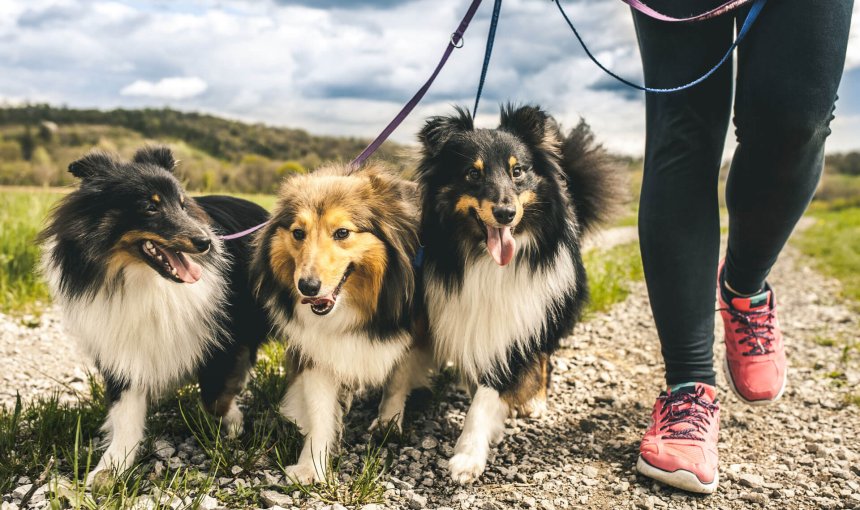
Whether you’re doing it as a side hustle, want to stay more active, or just spend more time around dogs – becoming a dog walker can be a rewarding gig! But which also raises the question: how to become a dog walker in the first place?
Because with all the competition, platforms, and skills you need – you might be wondering where to get started. (Plus, how to possibly even build a career out of it, if that floats your boat.)
So sit tight, because we’ve got you covered – here’s everything you need to know to become a next-level dog walker, from A-Z. Let’s get started!

Find out how your dog spends their time.
Read moreHow to become a dog walker: Getting started
Walking your dog can be a great way to unwind from a busy day. Besides, it’s a win-win for both you and your buddy. (Because you both get to enjoy the exercise and outdoors together.)
But more often than not, sometimes you might simply be too busy to walk your dog. Which is where partnering with a dog walker – maybe like you – can be a major plus.
So no matter whether you want to go pro or just have some spare time on weekends, here are a few tips for a stress-free dog walker career journey.
Figure out your clients & competition
Now before you dive in, take some time to research your local dog walking market. This will help you figure out:
- Whether there’s a local dog walking business or platform you could get registered at (like Wag Walking or Rover)
- What your clients are looking for in a dog walker they’d like to work with on the regular
- How other dog walkers around you are promoting themselves – and what they’re charging
- Whether there’s a gap you can fill somehow that’ll help you stand out better
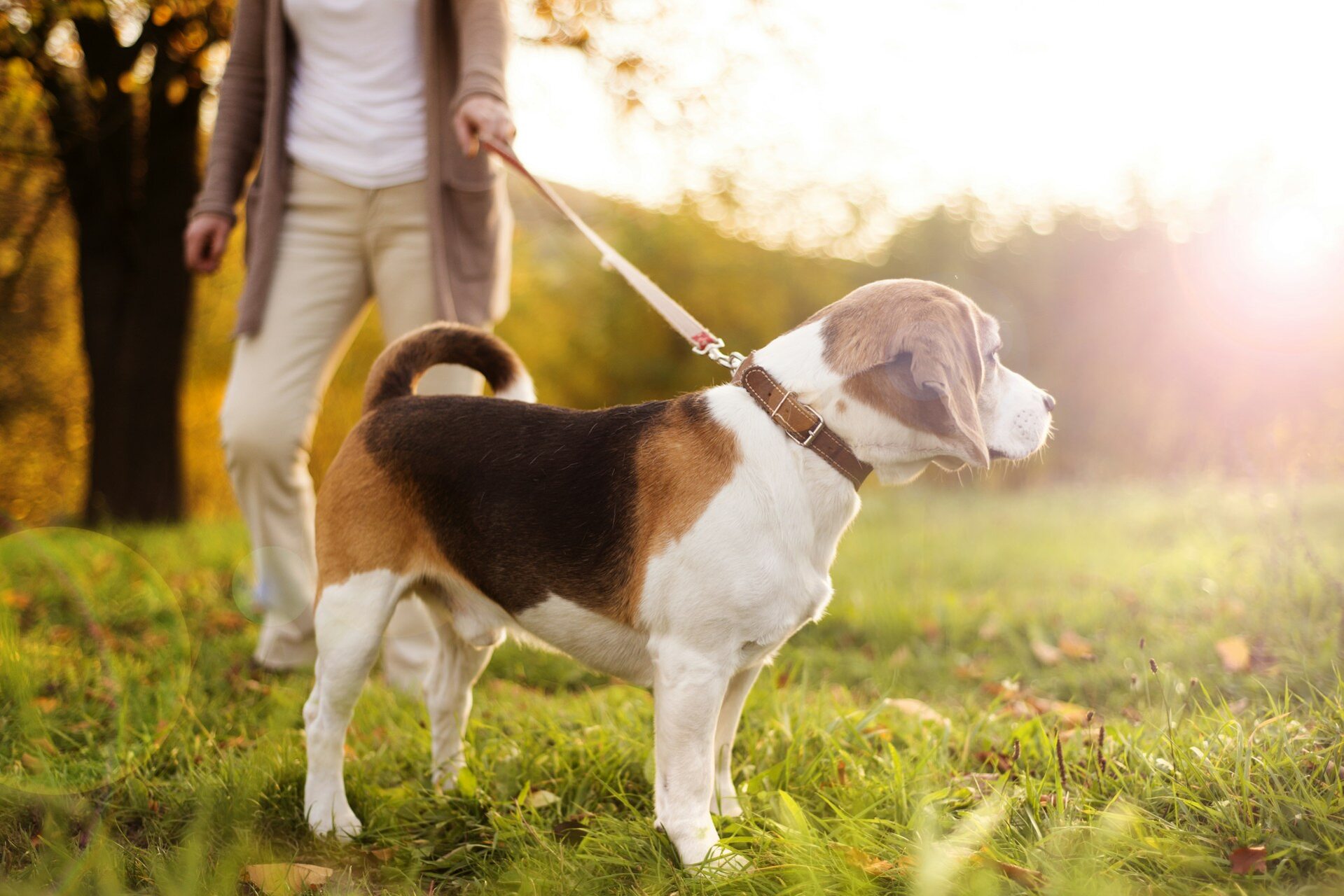
For example, you might find that other dog walkers around you offer certain skills, experience, certification and training .(That it’d make sense for you to invest in as well.)
Else, you might notice there’s a gap for:
- Walkers offering to take care of senior dogs. (That might be more likely to wander away.)
- Or socialize puppies to other pets or people.
- Highly active dogs – and a walker who can keep up with even the most high-energy breed.
- Or someone who can assure they can keep even a runaway dog 100% safe – with a dedicated dog GPS tracker.
So step one: figure out a way to stand out from the rest in a way that works for you. Then, let’s…
Pick up some on-the-job training
If there’s a dog club, animal shelter or rescue organization around you, consider volunteering some time to pick up some hands-on experience.
These kinds of organizations can offer a ton of insight regarding dog behavior – including:
- How to help a dog relax and trust you
- What to keep in mind when you factor in a dog’s age or breed (like, for example, if you’re walking a dog with a high prey drive or a highly active dog breed)
- What to do if the dog you’re walking runs away while out on a trail
You could also shadow a shelter staff member and pick up some tips and tricks. With time, you’ll get more practical experience into the day-to-day responsibilities your new role will involve.
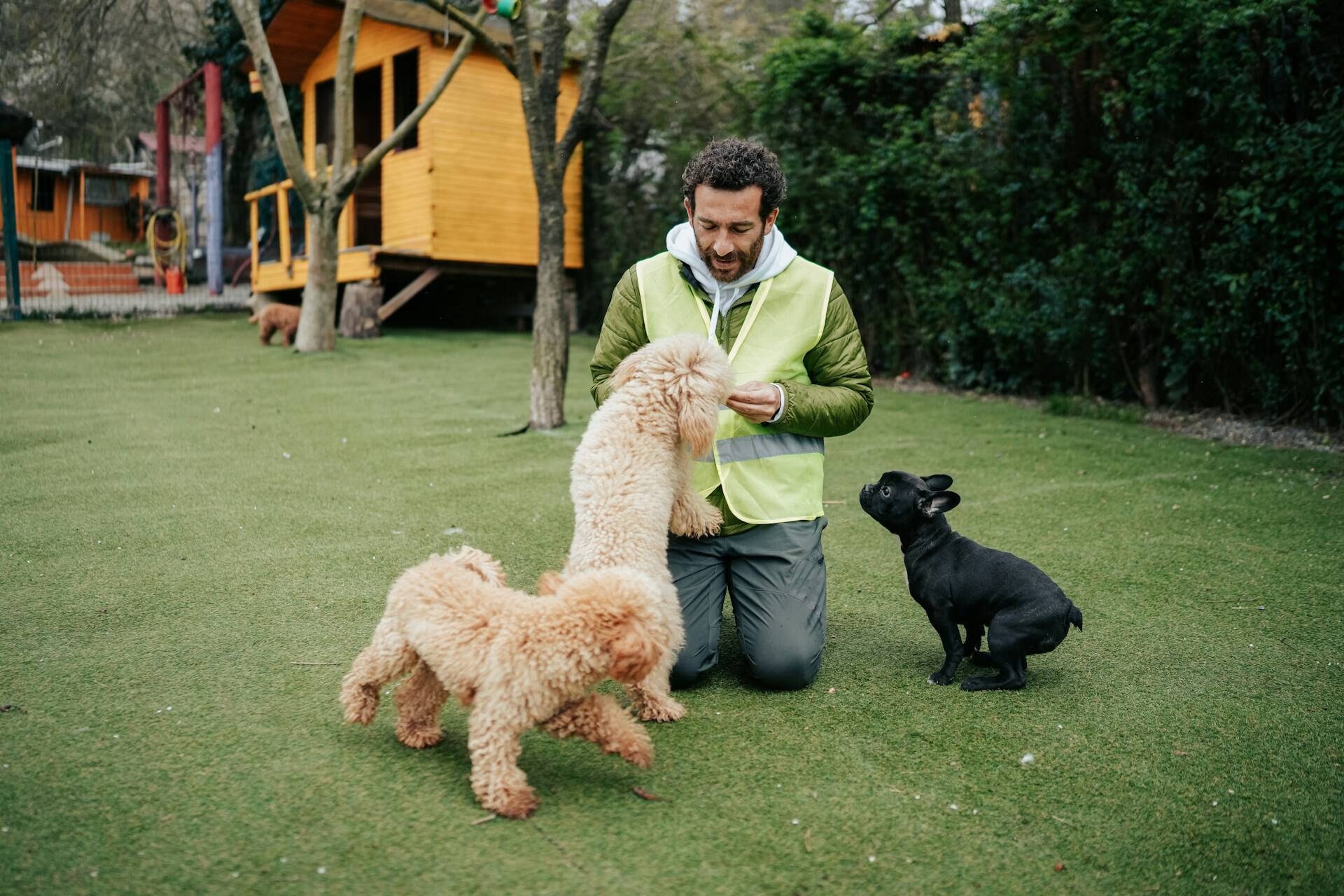
⚠️ For example, dogs that were once bred to help hunters chase down prey (like Beagles, Foxhounds, and even Retrievers) might be more likely to bolt off after a squirrel at the dog park. This is especially so if they’re younger or haven’t been trained as well yet.
And if you’re walking a dog – you’re 100% responsible for their safety, right?
So make sure to pick up all the practical experience you can from the pros. It’ll help you walk your dogs more confidently and with the peace of mind you know what to do, no matter what kind of situation crops up.
(Besides, you can also get them to endorse your skills and experience once you set up a dog walker profile and start promoting your services. A few kind words can go a long way!)
Read more:
- 7 Tips For Handling The Prey Drive In Dogs
- Active Dogs: 10 High-Energy Dog Breeds For Outdoorsy Folks
- Setter Rescue Netherlands: Rehoming Dogs With Tractive
- DIBS On Tractive GPS – How GPS Tracking Helps Dog Rescue Heroes
Get certified
Now you don’t necessarily need formal training to become a dog walker in most countries. But can it help you stand out? Definitely.
Because when you think about it – just loving dogs and enjoying spending time with them won’t be enough to prepare you in case of an emergency!
But with a proper certification course, you’ll be better-equipped to handle any situation your dogs run into when you’re on a walk outdoors. (Plus, it’s a major plus for you and your dog walking business brand.)
So consider taking a course with Pet Sitters International or the International Organization of Professional Dog Walkers as a start. These can help you troubleshoot problems like:
- An aggressive dog at the park,
- A high-energy puppy that just can’t stop crashing picnics,
- A dog that keeps pulling at the leash,
- …or all of these combined!
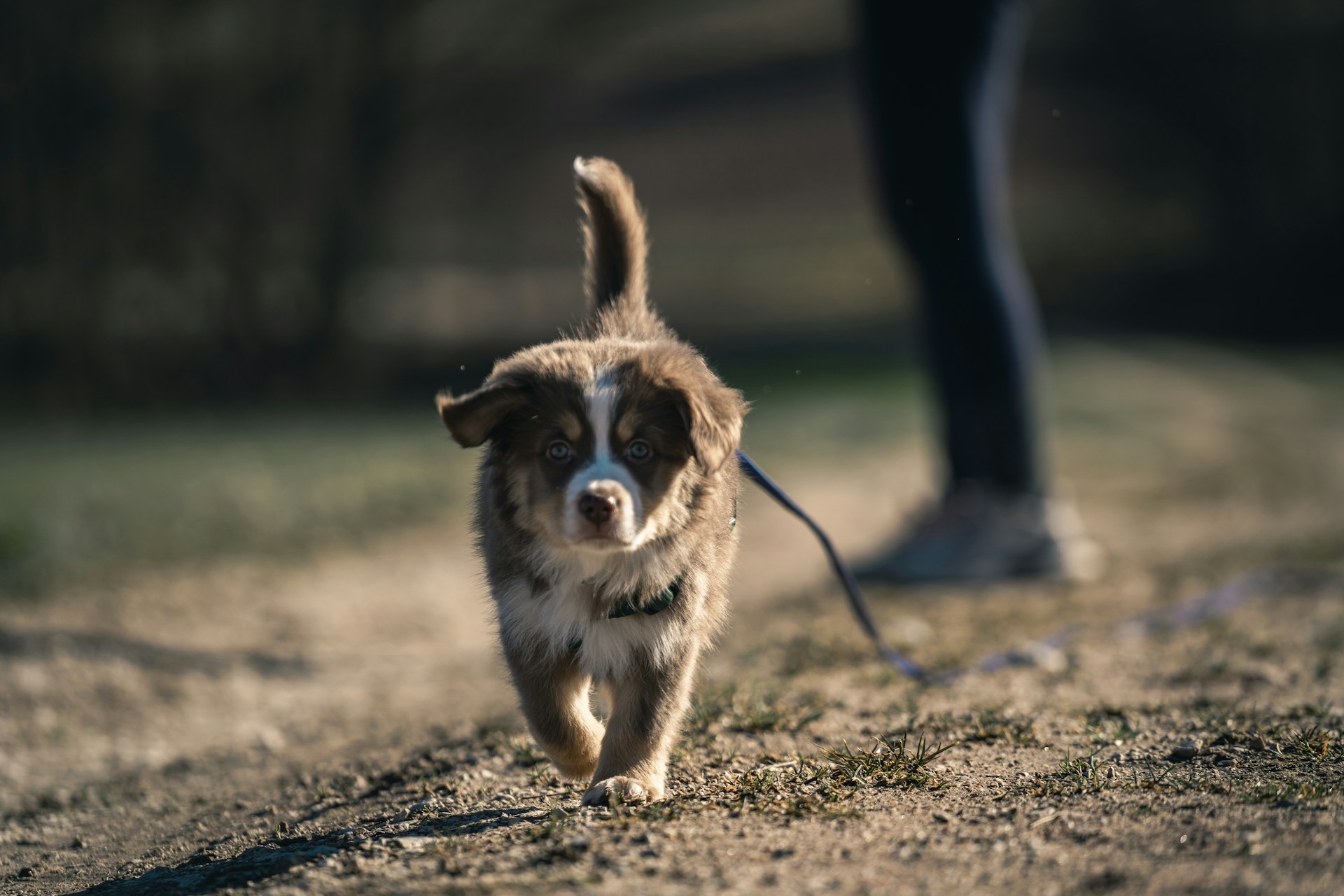
⚠️ If you’re considering offering your services as a dog sitter on top of a walker, you might need to show some formal certifications for it. Make sure to check your local laws so you can better understand these requirements.
Build some experience with people (and dogs) you know
Becoming a next-level dog walker means adapting to the needs of different dogs – their age, activity levels, and temperament. And this kind of experience doesn’t come overnight.
So start simple and build some experience walking:
- Your own dog (if you have one)
- Your friends’ dogs
- Your loved ones’ dogs
- Your neighbors’ dogs
This can help you put what you’ve learned into practice – and grow more confident in your dog walking skills with time.
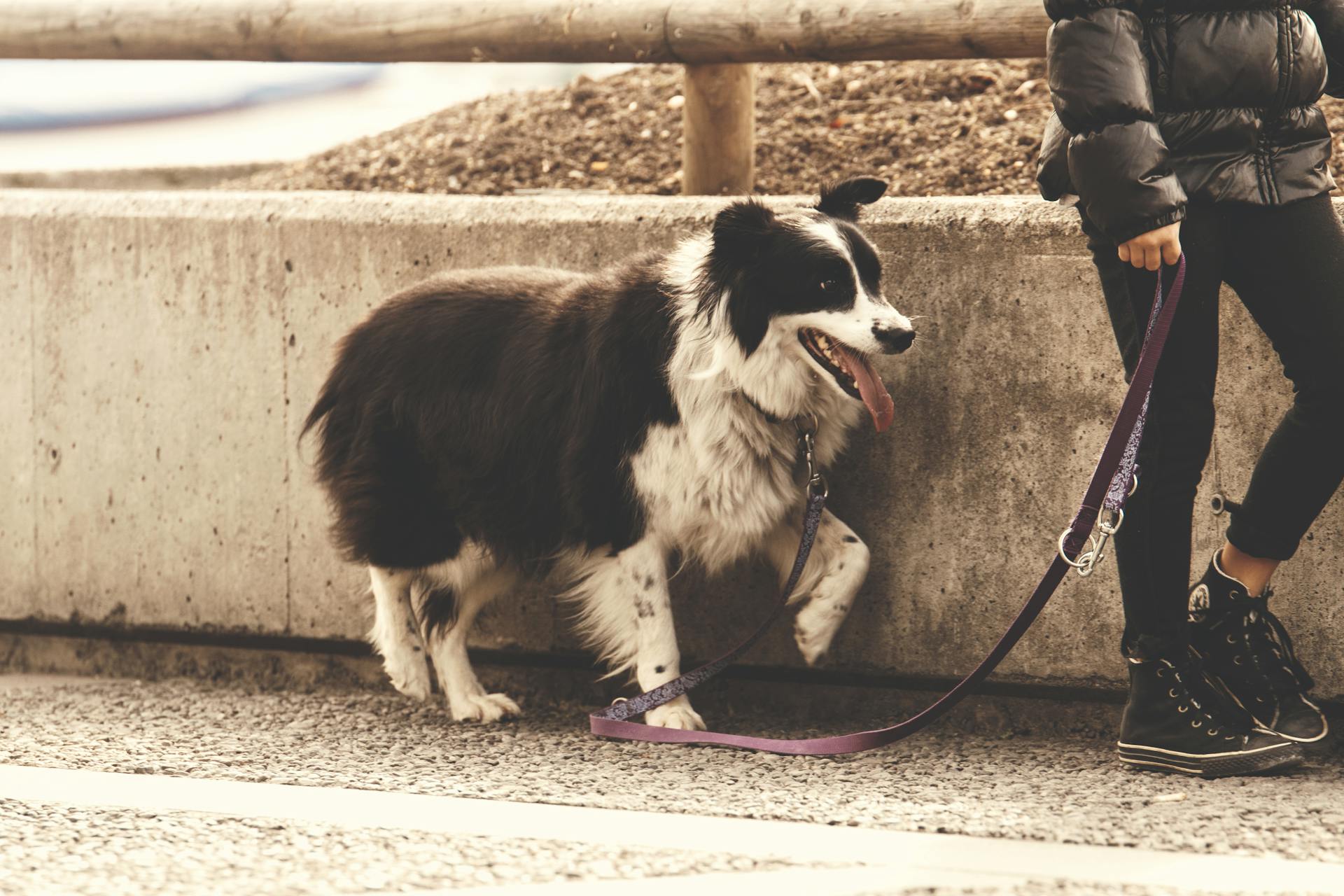
Importantly, you could also ask your friends or loved ones to leave you a few kind words once you create a profile on a dog walkers app or platform. Their positive reviews can help boost your online presence and help you connect to more dog parents who could be potential clients.
💡 Building practice walking dogs can help you learn what to do in the ultimate emergency situation: aka, if and when the dog you’re walking runs away. (Whether yours or a client’s.)
Get informed on why dogs run away
No matter how pampered or well-fed they are – dogs can run away for all sorts of reasons. Some of which include:
- Plain old boredom.
- Hunting instincts, especially for certain breeds.
- Mating instincts, i.e., if they sniff out a female in heat nearby
- Fear
- Anxiety
- Stress
- …and more.
And when it comes to becoming a next-level dog walker, you absolutely want to avoid a situation where your client’s dog has run away – and you don’t know where they’ve gone!
Read more:
- Why Do Dogs Run Away? 6 Reasons Behind It
- Runaway Dog: Which Dog Breeds Are Most Likely To Run Away?
- Dog Keeps Running Away? 5 Tips To Prevent An Escape
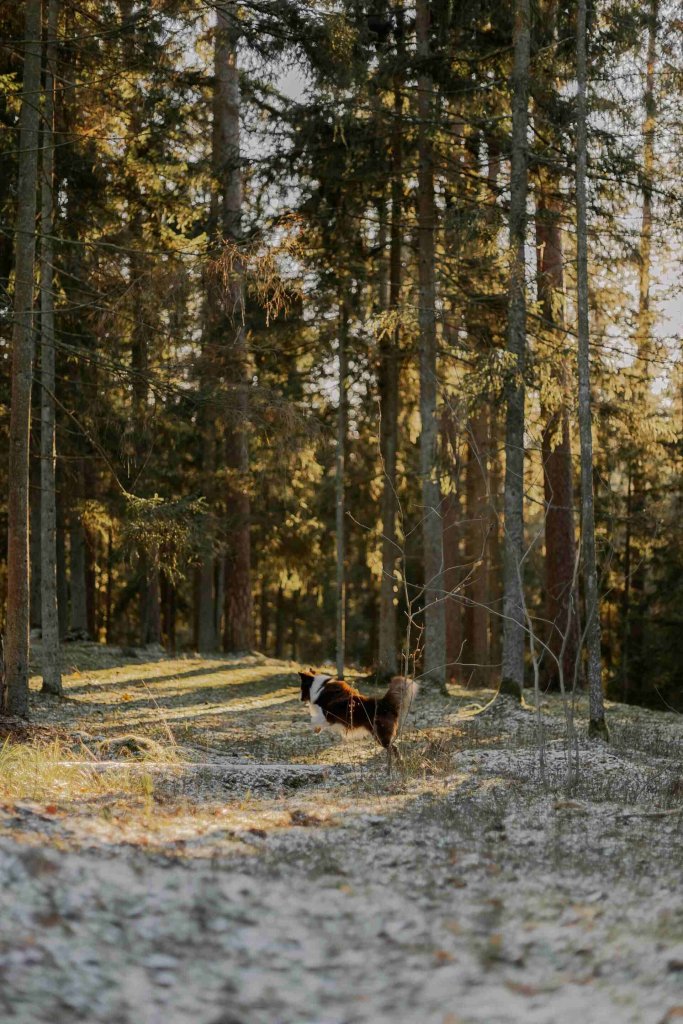
Which is why it makes sense to get informed on the reasons why dogs run away. (So you can better approach this conversation with your clients as you’re getting to know them.)
For example, you could ask your clients:
- Whether their dog has a tendency to run away on walks or escape from home
- What they’ve done to prevent an escape or how they managed the situation in the past
- Their dog’s breed and history
- Whether their dog is fixed or not (i.e., neutered or spayed)
- Their dog’s habits and temperament (i.e., whether their dog is friendly or a bit more slow to warm up)
All these can help you better understand the dogs you’re walking – and catch on to any warning signs that much earlier.
💡If you’ve invested in a dedicated dog GPS tracker like Tractive, you’re in luck. With a Premium subscription, you can share where you’re out walking your dog with friends, neighbors, or another emergency contact. Keeping both you and your dog safe while out on walks.
Read more: How Does Family Sharing Work?
Plan ahead for a runaway dog
Now imagine being a dog walker with a 100% safe walk track record? That’s what you get when you a) inform yourself what to do during an emergency, and b) actually plan ahead for an emergency. (Like a runaway dog.)
Which is why dog parents around the world are investing in Tractive’s life-saving, GPS-powered technology. Because now, with just a glance at your phone, you can track a runaway dog – as they move – all in real-time.
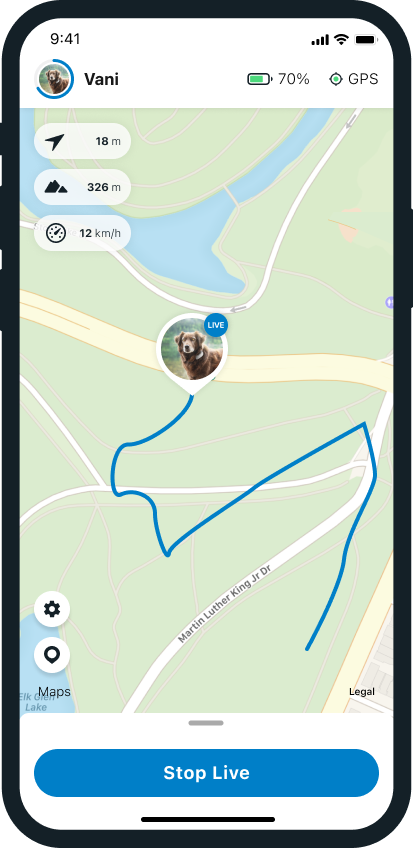
Which, besides helping you figure out where your dog’s run off to, can also help you intervene that much quicker.
Meaning your dog’s now less likely to get:
- Hit by a passing car
- Injured from a fight with a predator in the woods
- Poisoned from eating something they shouldn’t
- Lost from running off too far away from safety
- Stolen by pet thieves, in case your dog runs into them
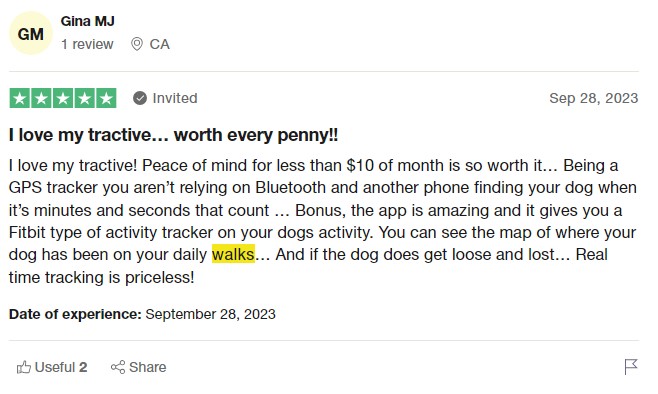
💡Even if your emergency contact doesn’t have a Tractive device themselves, you can quickly share their dog’s tracker location with Public Sharing. With it, you can create a link that allows them to see your tracker’s current location.
Because no matter what, it’s always worth it guaranteeing your dog’s safety – both near and far.
Plan ahead for all types of weather
Another key factor to stand out as a savvy dog walker? How well-prepped you are to handle any sort of weather.
Because all too often, you might overlook a step or two that could potentially:
- End up with your dog experiencing heatstroke from warm weather
- Damage your poor dog’s paws during snowy winter months
- Give your dog a pollen allergy around spring
- Infect your dog’s fur or paws if it’s damp or rainy outdoors

So before you head outdoors, it’s a good idea to check with your clients what health issues their dogs might already be experiencing. (Like a brachycephalic breed, that might overheat easily – or a small, thin-furred dog that might get cold easily.)
Next, get informed on how to work with the weather – not against it – when planning out your dog walks. These posts can help you prep even better:
- Dogs & Cold Weather: How Cold Is Too Cold For Dogs?
- 8 Best Tips On How To Protect Dog Paws In Snow
- Winter Dog Care: Protect Your Dog This Winter With These 8 Tips
- Dog Pollen Allergy: Symptoms And Treatment Of Hay Fever In Dogs
- Dogs And Heat: How To Keep Dogs Cool In Summer
- Heat Stroke In Dogs: Symptoms, Treatment & Prevention
💡You can also log in your daily walks with Tractive’s fun Walk feature. (Perfect for capturing those memorable moments – and also those pesky pollen-riddled areas on your daily walks together, so you can avoid them next time round.)
Get connected to dog parents around you
Once you’ve picked up some experience and feel better prepared you can handle any dog walk situation – it’s time to connect to dog parents around you.
Which you can start by creating a profile on dog walker platforms like:
- Wag
- Rover
- My Pet Walker
- GoWalkies
- White Label Fox
- Scout For Pets
- …and many more!
Here, you can include your experience, skills, and certifications – and, of course, any kind words your friends or family members might have for your dog walking services.
Services like these make it easy for you to connect with clients who want their dogs to get the exercise they need. Many of them also help you easily handle managing reviews and payments directly via their website or app.

Make sure to also look up average dog walking rates in your area and tailor these to:
- Your experience level
- How many dogs you can walk at once
- Any other services you offer (like sitting)
It’s also a good idea to spread the word about your services through social media, local community boards, and even Craigslist. Encourage clients to refer your services to people they know so you can gain some new ones through word of mouth.
💡Want to get connected to thousands of pet parents and build your online presence? Head on over to Tractive’s Facebook and Instagram pages and get networking!
Walk your dogs stress-free – with 100% peace of mind
Dogs come in many shapes and sizes – but they all need regular walks. Which is where honing your skills as a dog walker can help you earn a little extra on the side, stay fit and active yourself, and – most importantly – spend some time outdoors with dogs!
So here’s how to become a dog walker, summed up:
- Figure out the local dog walking market around you, including what your fellow dog walkers are offering, what your clients are looking out for, and if there’s a local business you could register at.
- Get some hands-on experience at a local dog club, animal shelter, or rescue organization. This can help you better understand how to adapt to the needs of different dogs.
- Consider getting certified with an official dog walking course. This can help you better stand out from the crowd and feel more confident in handling any situation that arises during a walk.
- Build some experience by walking your neighbors’ dogs or those of your friends and family.
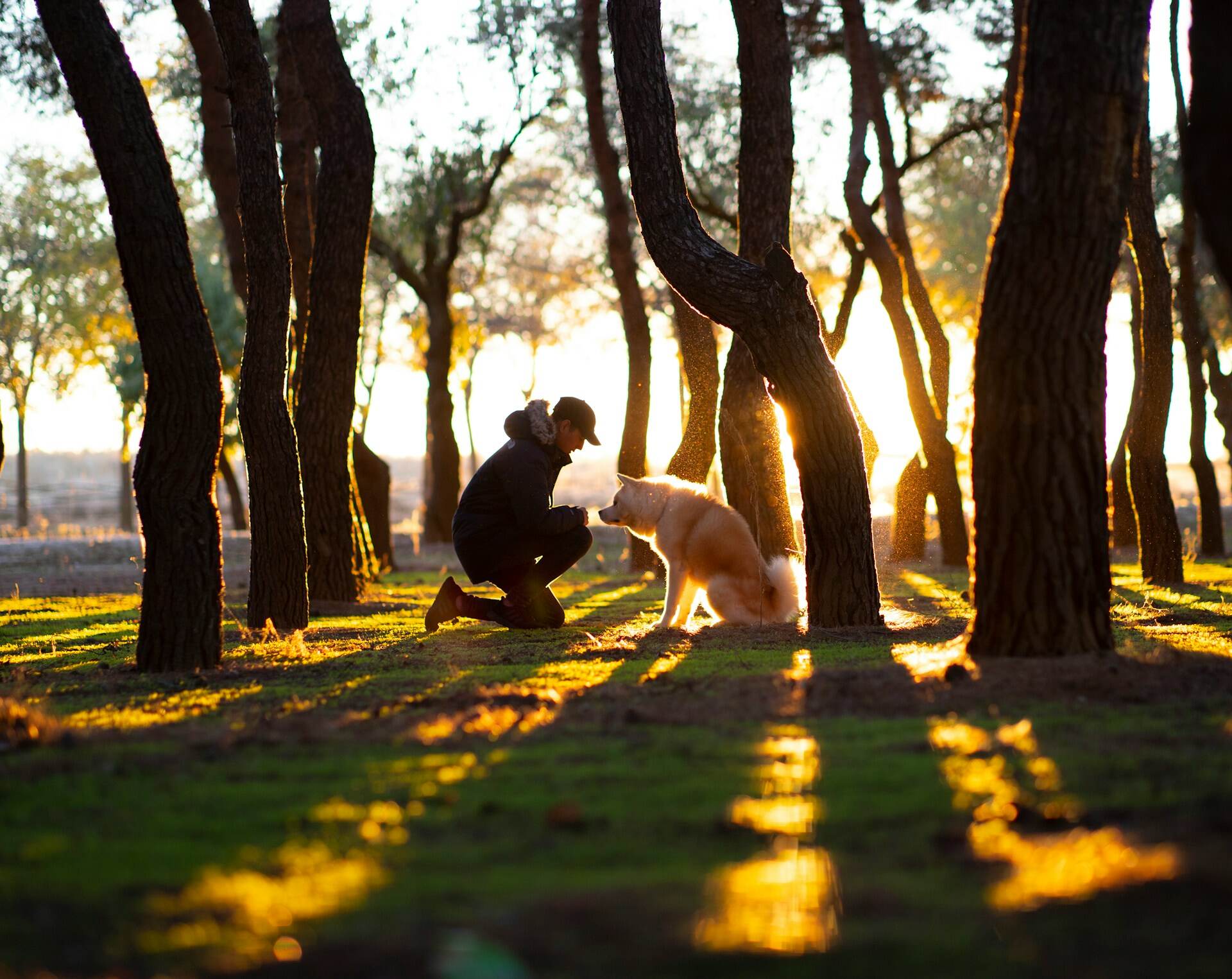
- Get informed on why dogs run away – and go prepared the next time you’re out on a walk. (It’s bad enough if your own dog runs away – but someone else’s dog is just a world of trouble you’d rather avoid.)
- Plan ahead for a potential runaway dog situation – and what you’re going to do if that happens. In times like these, tracking them in real-time with a dog GPS tracker can be a lifesaver.
- Plan ahead for bad weather, including when it’s too hot, too cold, or too allergy-inducing.
- Build your online presence by creating a profile on Wag, Rover, or another dog walker platform. Get connected to dog parents in your area via social media, local community boards, or Craigslist.
Remember: whenever you walk a dog, you are essentially taking care of someone’s baby.
So make sure you do everything you can to ensure their dogs are kept safe.
Which, for a dog walker, means always knowing where to find their dog on a walk – no matter the situation or where they are.
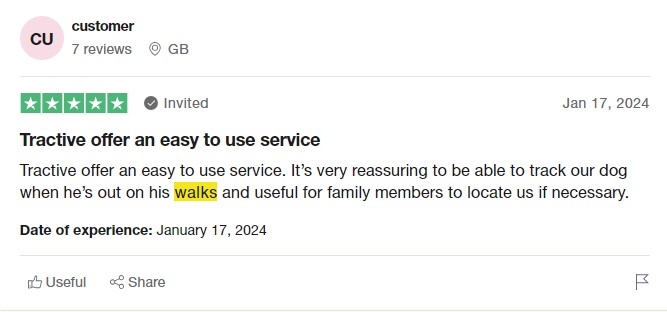
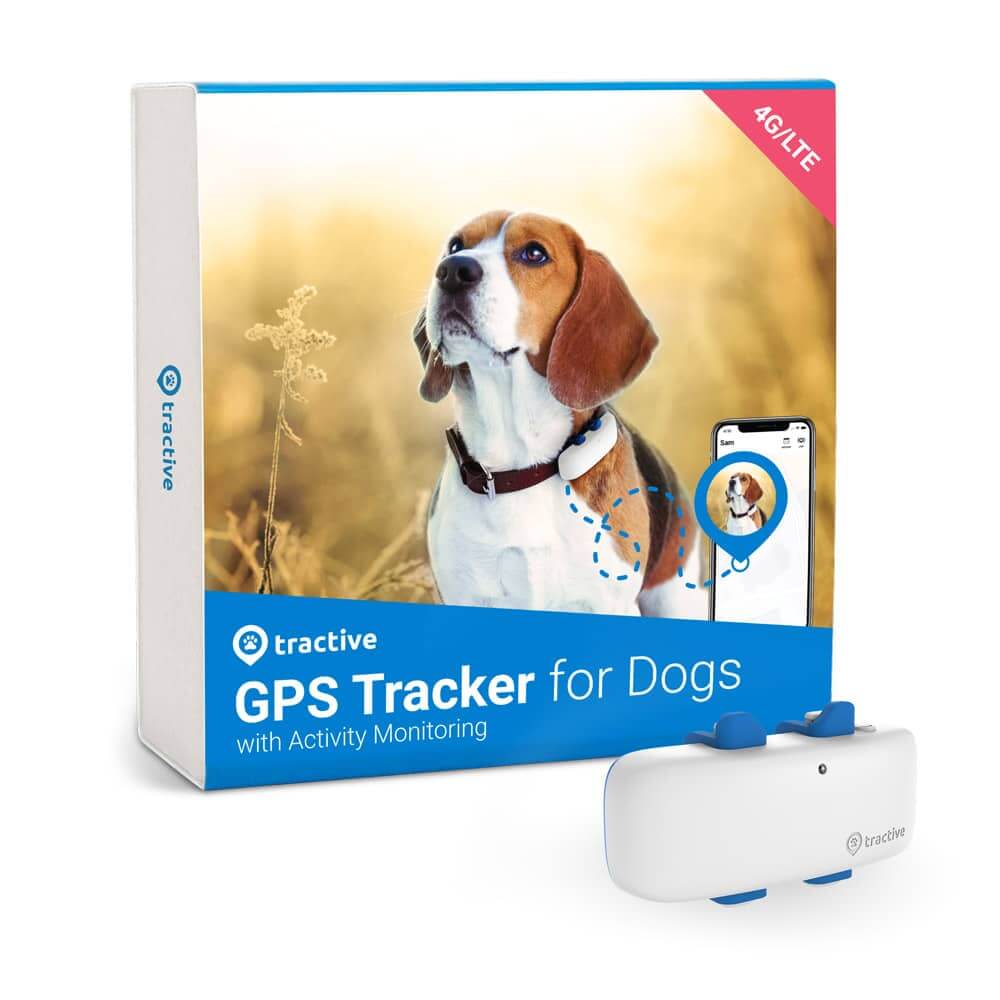
Always know where your dog is
Follow every step in real-time with unlimited range. Get alerts if they wander too far. Keep them happy & healthy with Wellness Monitoring. And let others – like walkers or sitters – keep an eye on your dog too.
So extra peace of mind for you – plus the confidence to head off for your walk knowing you have an added layer of safety and protection for your dogs.
Wondering what kind of training you’d benefit from as a dog walker? Here’s a video covering the basics:
And if you’ve got another dog loving friend who would benefit from these tips, share this post with them – and let’s help build a safer, kinder world for our furry friends together.




